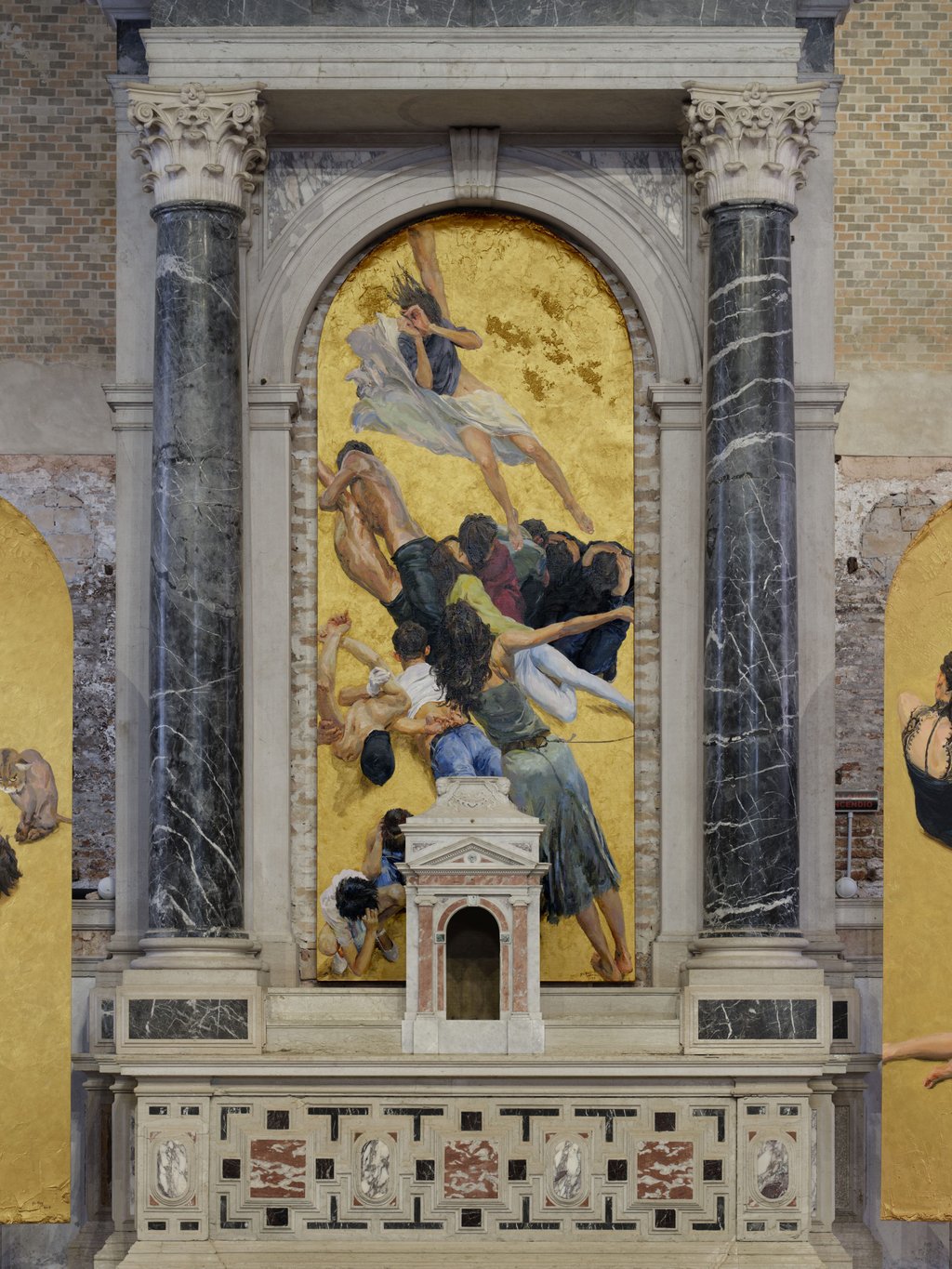Chinese artist Yu Hong’s riffs on religious art, showing in a former church in Venice, express the fragility of life
- Timed to coincide with the Venice Biennale, Chinese artist’s first major show in Europe is in a former church – appropriate given religious art inspires her art
- She depicts the cycle of life from birth to death in 10 panels styled like Byzantine icons; climate change and a Caravaggio altarpiece inspire other works

Visitors to artist Yu Hong’s exhibition at the Chiesetta della Misericordia in Venice, Italy, will come face to face with giant, gold-grounded painted panels reminiscent of the sacred art that would have once filled the deconsecrated church in the Cannaregio district.
The setting for the first major European exhibition of the 58-year-old Chinese artist, based in Beijing, brings into focus her long-standing practice of appropriating formal elements of Western and Eastern religious art to represent fleeting, seemingly inconsequential contemporary phenomena.
Yu’s black humour is often in evidence in her somewhat disturbing images. The altarpiece, ironically titled Make a Wish (2023), is a tall panel fitted into the original, Baroque altar.

It depicts faceless individuals crouching, their hands bound or placed behind their heads, prisoner-style; two bare-chested men either fighting or in a passionate embrace; and two women plunging through the empty, golden background like fallen angels.